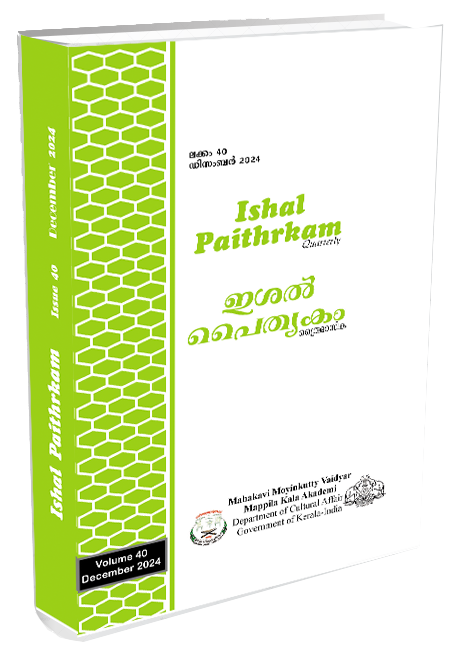From Breadbaskets to Battlegrounds: India's Polarised Prospect
Keywords:
Economic disparity, Social Conflict, Income inequality, PoliticalAbstract
In India, the growing disparity between rich and the poor is considerably more visible than it was during British colonial rule. Economic inequality is marked by gaps in income, wealth distribution, and access to resources, which fuels resentment and discontent among various socioeconomic groups. This sense of discontent frequently manifests as political polarisation, in which opposing factions align with conflicting ideas and parties ends up in increasing societal differences. Inequality and polarisation have historical connections to the potential for social conflict. A highly unequal or polarized society may be more prone to conflicts, highlighting the social implications of economic disparities. Politicians use these disparities for electoral support, resulting in policies and rhetoric that exacerbate economic inequities. In India, economic inequality and political polarisation are deeply intertwined, exerting significant influence on the nation's socio-political landscape. Thus, addressing economic inequality is crucial for mitigating political polarisation and fostering a more inclusive and stable democratic environment in India.
Downloads
References
auernschuster, S., Falck, O., & Daniel, G. N. (2014). Social identity, competition, and finance: a laboratory experiment. Handle.net. http://hdl.handle.net/10419/31712
Bharti, N. K., Chancel, L., Piketty, T., & Somanchi, A. (2024, March 18). Income and Wealth Inequality in India, 1922-2023: The Rise of the Billionaire Raj. Shs.hal.science. https://shs.hal.science/halshs-04563836
Bou-Hamad, I., & Yehya, N. A. (2016). Partisan Selective Exposure in TV Consumption Patterns: A Polarized Developing Country Context. Communication Research, 47(1), 55–81. https://doi.org/10.1177/0093650216681896
Chandhoke, N., & Priyadarshi, P. (Eds.). (2009). Contemporary India: economy, society, politics. Pearson Education India.
Church, W. (2020). United We Stood, Divided We Fall: The 21st Century Paradigm of Inequality and Polarization in the United States. https://lup.lub.lu.se/luur/download?func=downloadFile&recordOId=9026539&fileOId=9026540
Dhatrak, S. (2020). The Socio-Economic Impact of Covid-19 or Corona Pandemic in India. International Journal of Arts, Science and Humanities. https://www.shanlaxpublications.com/wp-content/uploads/ASH_V8_N1_011.pdf
Guha , R. (2017). India After Gandhi: The History of the World’s Largest Democracy. In Google Books. Pan Macmillan. https://books.google.co.in/books?hl=en&lr=&id=AW4sDwAAQBAJ&oi=fnd&pg=PP8&dq=Guha
Guha-Khasnobis, B., & Agarwal, R. (2014). Economic Polarisation and its Implications for Regional Policies in India. The Indian Economic Journal, 61(4), 626–631. https://doi.org/10.1177/0019466220140405
Huber, J. D., & Suryanarayan, P. (2015). Ethnic Inequality and the Ethnification of Political Parties. World Politics, 68(1), 149–188. https://doi.org/10.1017/s0043887115000349
Jayadev, A., Motiram, S., & Vakulabharanam, V. (2007). Patterns of Wealth Disparities in India during the Liberalisation Era. Economic and Political Weekly, 42(38), 3853–3863. https://www.jstor.org/stable/40276421
Jaffrelot, C. (2015). What ‘Gujarat model’? Growth without development—And with socio-political polarisation. South Asia: Journal of South Asian Studies, 38(4), 820-838.
Justino, P., Roy, R., Cramer, C., Harriss-White, B., Herring, R., Litchfield, J., Sinha, S., & Teitelbaum, M. (2004). REDISTRIBUTION, INEQUALITY AND POLITICAL CONFLICT. http://fmwww.bc.edu/repec/res2004/Justino.pdf
Kumar, S. (2021). Class, caste and agrarian change: The making of farmers’ protests. The Journal of Peasant Studies, 48(7), 1371-1379.
Kumar, S. (2024). The Farmers’ Movement and New Agrarian Politics in Northern India (2020–2021). In The Indian Farmers’ Protest of 2020–2021 (pp. 103-115). Routledge India.
Levin, S. A., Milner, H. V., & Perrings, C. (2021). The dynamics of political polarization. Proceedings of the National Academy of Sciences, 118(50), e2116950118. https://doi.org/10.1073/pnas.2116950118
Mahajan, A., & Chand, P. (2022). COVID - 19 and Disparities in India : An Analysis. Prabandhan Indian Journal of Management, 15(12), 54–54. https://doi.org/10.17010/pijom/2022/v15i12/172601
Mahmood, Z. (2017). Politics sans economics: Commentary on the political economy of demonetization in India. Conjuntura Austral, 8(41), 71-85.
Moraes, J. A., & Béjar, S. (2022). Electoral volatility and political polarization in developing democracies: Evidence from Latin America, 1993–2016. Party Politics, 135406882210950. https://doi.org/10.1177/13540688221095098
Motiram, S., & Sarma, N. (2014). Polarization, Inequality, and Growth: The Indian Experience. Oxford Development Studies, 42(3), 297–318. https://doi.org/10.1080/13600818.2014.897319
Mukherjee, S. (2020). Performance assessment of Indian GST: State-level analysis of compliance gap and revenue growth. National Institute of Public Finance and Policy, 1-35.
Nandwani, B. (2023). Land Rights Recognition and Political Participation: Evidence from India. Journal of Development Studies, 59(11), 1741–1759. https://doi.org/10.1080/00220388.2023.2235107
Nelson, M. H. (2023). Explaining socioeconomic disparities in electoral participation: The role of health in the SES-voting relationship. Social Science & Medicine, 320, 115718. https://doi.org/10.1016/j.socscimed.2023.115718
Oxfam International. (2024). India: Extreme Inequality in Numbers. Oxfam International. https://www.oxfam.org/en/india-extreme-inequality-numbers
Polacko, M. (2022). The Politics of Income Inequality: Redistribution, Turnout and Responsiveness. Statistics, Politics and Policy, 0(0). https://doi.org/10.1515/spp-2021-0018
Raphael, S., & Schneider, D. (2023). Introduction: The Socioeconomic Impacts of COVID-19. RSF: The Russell Sage Foundation Journal of the Social Sciences, 9(3), 1–30. https://doi.org/10.7758/rsf.2023.9.3.01
Sahoo, N. (2020). MOUNTING MAJORITARIANISM AND POLITICAL POLARIZATION IN INDIA. JSTOR. https://www.jstor.org/stable/resrep26920.7
Schneider, G., & Shevchuk, O. (2020). Falling Apart or Flocking Together? Financial Crises, Inequality and Left-Right Polarization in the OECD. KOPS (University of Konstanz). https://doi.org/10.33774/apsa-2020-rwc7j
Sen, K. (2018). Poverty, Economic Inequality and Polarization: A District-Wise Analysis of Maharashtra. Indian Journal of Human Development, 12(3), 420–440. https://doi.org/10.1177/0973703018813753
Sen, A & Himanshu .(2004). Poverty and inequality in India: I,” Economic and Political Weekly, 4247-4263.
Sharma, S., & Vidyapith, M. G. K. (2023). Wealth and income inequality in India. International Journal of Creative Research Thoughts, 11(6), 416-42
Suhay, E., Tenenbaum, M., & Bartola, A. (2022). Explanations for Inequality and Partisan Polarization in the U.S., 1980–2020. The Forum, 20(1), 5–36. https://doi.org/10.1515/for-2022-2052
Thampi, A., & Anand, I. (2017). Income Inequality and Polarization in India: The Role of Caste. http://old.iariw.org/India/thampi.pdf
Varghese, N. V. (2022). Marginality and Marginalisation. Marginality in India, 65–81. https://doi.org/10.4324/9781003279679-8
Weiner, M. (2001). The struggle for equality: caste in Indian politics. The success of India’s democracy, 193-225.
World Inequality Lab (2024, March 27): “India’s income inequality is now worse than under British rule,” new report says. DNyuz. https://dnyuz.com/2024/03/27/indias-income-inequality-is-now-worse-than-under-british-rule-new-report-says/
Zhao, W., Walasek, L., & Brown, G. (2023). The Evolution of Polarization in Online Conversation: Twitter Users’ Opinions about the COVID-19 Pandemic Become More Politicized over Time. Human Behavior and Emerging Technologies, 2023, 1–14. https://doi.org/10.1155/2023/9094933
Downloads
Published
Issue
Section
License
Copyright (c) 2025 ISHAL PAITHRKAM

This work is licensed under a Creative Commons Attribution-NoDerivatives 4.0 International License.

